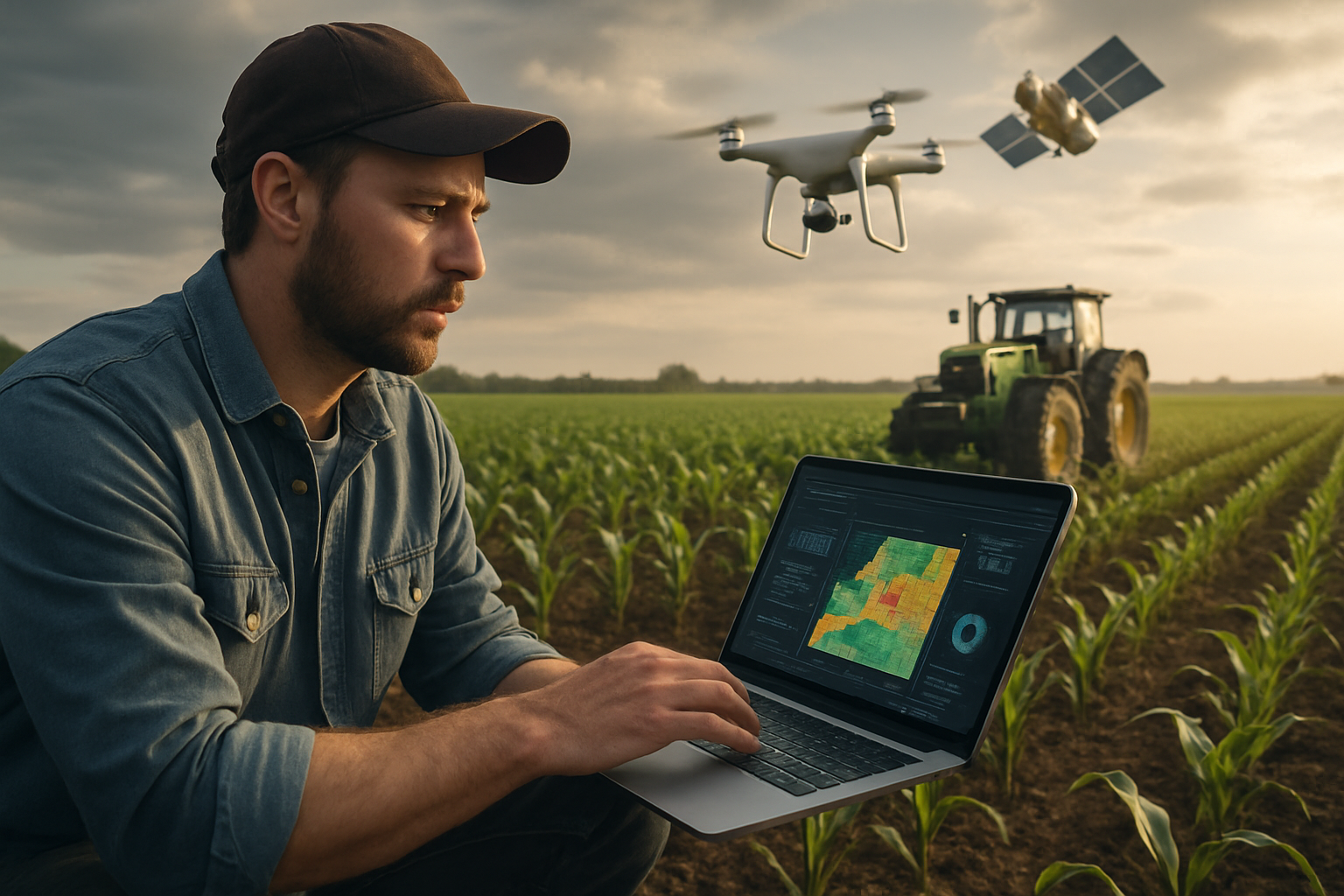Precision Agriculture: Revolutionizing Crop Management
Precision agriculture is transforming the way farmers approach crop management, leveraging cutting-edge technology to optimize yields and minimize resource waste. This data-driven approach to farming is reshaping traditional agricultural practices, offering unprecedented insights into soil health, crop growth, and environmental factors. As the global population continues to grow, precision agriculture presents a promising solution to meet increasing food demands while promoting sustainable farming practices.

The Evolution of Precision Agriculture
Precision agriculture has come a long way since its inception. Early adopters primarily used GPS-guided tractors for more accurate field navigation and reduced overlap in planting and spraying. As technology advanced, farmers began incorporating yield mapping and variable-rate application of inputs. This allowed for more targeted use of fertilizers and pesticides, reducing costs and environmental impact.
In recent years, the integration of artificial intelligence and machine learning has taken precision agriculture to new heights. These technologies can analyze vast amounts of data from various sources, including weather patterns, soil samples, and historical yield data, to generate predictive models and actionable insights. This level of analysis enables farmers to make proactive decisions, such as adjusting planting schedules or altering irrigation patterns based on forecasted weather conditions.
Key Technologies Driving Precision Agriculture
Several key technologies are at the forefront of the precision agriculture revolution:
-
Remote Sensing: Satellite imagery and drone-based cameras provide high-resolution images of fields, allowing farmers to monitor crop health, detect pest infestations, and identify areas of stress.
-
IoT Sensors: Networks of connected sensors deployed across fields measure various parameters such as soil moisture, temperature, and nutrient levels in real-time.
-
GPS-Guided Machinery: Tractors and other farm equipment equipped with GPS technology can operate with centimeter-level accuracy, optimizing field coverage and reducing waste.
-
Variable Rate Technology (VRT): This allows for the precise application of inputs like seeds, fertilizers, and pesticides based on the specific needs of different areas within a field.
-
Farm Management Software: Advanced software platforms integrate data from multiple sources, providing farmers with a comprehensive view of their operations and facilitating data-driven decision-making.
Economic and Environmental Benefits
The adoption of precision agriculture techniques offers significant economic and environmental benefits. By optimizing input use, farmers can reduce costs associated with seeds, fertilizers, and pesticides. This not only improves profit margins but also minimizes the environmental impact of farming practices. Precision agriculture can lead to increased yields, better crop quality, and more efficient use of water resources.
From an environmental perspective, precision agriculture contributes to sustainable farming practices by reducing chemical runoff, conserving water, and minimizing soil erosion. By applying inputs only where and when they are needed, farmers can significantly reduce their environmental footprint while maintaining or even improving productivity.
Challenges and Future Outlook
Despite its potential, precision agriculture faces several challenges. The high initial investment costs for technology and equipment can be a barrier for many farmers, particularly those operating small-scale farms. Additionally, there is a need for technical expertise to effectively implement and manage precision agriculture systems, which may require training or hiring specialized personnel.
Data privacy and security are also growing concerns as farms become increasingly connected and reliant on digital technologies. Ensuring the protection of sensitive farm data and preventing unauthorized access to farm management systems are critical considerations for the industry.
Looking ahead, the future of precision agriculture is promising. Ongoing advancements in AI, robotics, and sensor technologies are expected to further enhance the capabilities of precision farming systems. The integration of blockchain technology could improve traceability and transparency in the food supply chain, while the development of autonomous farm equipment could address labor shortages and further optimize field operations.
Practical Insights for Implementing Precision Agriculture
• Start small: Begin with one or two precision agriculture technologies and gradually expand as you become more comfortable with the systems.
• Prioritize data collection: Invest in reliable sensors and data collection tools to build a comprehensive database for your farm.
• Collaborate with experts: Partner with agricultural technology providers or consultants to ensure proper implementation and maximize the benefits of precision farming techniques.
• Focus on ROI: Carefully evaluate the potential return on investment for each precision agriculture tool or technique before implementation.
• Embrace continuous learning: Stay informed about the latest developments in precision agriculture through workshops, conferences, and industry publications.
In conclusion, precision agriculture represents a paradigm shift in farming practices, offering a path to more efficient, productive, and sustainable agriculture. As technology continues to evolve and become more accessible, precision agriculture is poised to play an increasingly important role in addressing global food security challenges while promoting environmental stewardship. By embracing these innovative approaches, farmers can position themselves at the forefront of a new era in agriculture, one that harmonizes productivity with sustainability.





